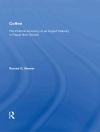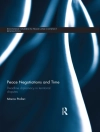This monograph expounds on general Yang–Mills symmetry, a new symmetry based on arbitrary vector gauge functions and Hamilton’s characteristic phase functions in the gauge transformations of Abelian and non-Abelian groups. General Yang–Mills symmetry includes the conventional gauge symmetries as special cases and is useful for describing phenomena at scales ranging from the super-macroscopic such as dark matter, to the ultra-microscopic such as the quantum 3-body problem of baryons. Moreover, this symmetry supports the Broader Particle-Cosmology framework based on particle physics and quantum Yang–Mills gravity in flat space-time, which can explain why the gravitational force is always attractive. This volume also discusses how CPT invariance in particle physics suggests a 'Big Jets’ model for the birth of the universe, proposing one explanation for the dearth of anti-matter in our universe. Finally, we discuss a simplified quantum shell model for N baryons with a quark Hamiltonian and a Sonine–Laguerre equation that gives reasonable eigenvalues for the energies of the 29 N baryons.
Contents:
- Preface
- Overview
- About the Authors
- Broader Particle-Cosmology: New Perspectives On Dark Matter, Dark Energy, And The Missing Anti-Matter:
- Underpinnings
- A Model for Dark Matter
- A Model for Dark Energy
- The Question of the Missing Antimatter: The Big Jets Model
- The Evolution of the Universe
- Symmetry-Unified Quark-Cosmic Model Based On General Yang-Mills Symmetry:
- A Universal Principle of Interactions for Quarks and Leptons
- Finite Fermion Self-Masses and a Non-Propagating Phase Field
- Quark Confinement and the Accelerated Cosmic Expansion
- A Simple Harmonic Oscillator Model for 3-Quark Confinement
- Total Symmetry-Unified Model and Violations of All Internal Gauge Symmetries by Yang-Mills Gravity
- Appendices:
- Quantum Yang-Mills Gravity vs. Classical Einstein Gravity
- A New Gauge Invariant Phase Equation for Bound Fermions in Superconductors
- Quantum Shell Model for 3-Quark Bound States
- Epilogue
- Author Index
- Subject Index
Readership: Graduate students, researchers interested in theoretical physics, astrophysics and cosmology.
Key Features:
- The book expounds a new idea that enables us to explore both microscopic quark confinement and the super-macroscopic accelerated cosmic expansion due to ubiquitous baryon charges
- The idea can be applied to generalize the original Lee–Yang U(1) symmetry for baryon charges to obtain a new linear force. Although extremely weak, this force can overcome the gravitational force at large enough spatial separations and enables us to understand the late-time cosmic accelerated expansion without assuming a new dark energy
- The linear force also helps to understand a new picture of the universe consisting of a matter half-universe and an antimatter half-universe, as suggested by CPT invariance












